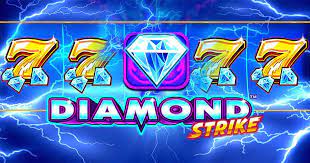
Big Diamond
The introduction of the Big Diamond during this period signified a shift in societal values. No longer were diamonds just for the elite; they became attainable symbols of aspiration and success. Today, owning a big diamond signifies achievement and love, intertwining personal milestones with the grandeur of these exquisite gems 69 VN.
The Science of Big Diamond
Understanding the science behind diamonds enhances our appreciation of these remarkable stones. The allure of the Big Diamond lies not only in its visual appeal but also in its fascinating formation and unique characteristics.
The Four Cs of Diamonds
When discussing diamonds, one must consider the “Four Cs”: Cut, Color, Clarity, and Carat weight. Each aspect plays a critical role in determining the quality and, consequently, the value of a diamond.
Cut refers to how well a diamond has been shaped and faceted. The precision of the cut affects the stone’s brilliance and sparkle. An expertly cut diamond maximizes light reflection, giving it that irresistible shine. For the Big Diamond, cut is paramount—its size demands exceptional craftsmanship to ensure it dazzles.
Color denotes the presence of any tint within a diamond. While most people associate diamonds with clear, colorless stones, the grading scale ranges from D (colorless) to Z (light yellow). The rarity of colorless big diamonds significantly increases their desirability and price.
Clarity assesses the presence of inclusions or blemishes within the diamond. Flawless diamonds are exceedingly rare, and even minor imperfections can influence a diamond’s value. When searching for a Big Diamond, clarity becomes a vital consideration, as flaws may be magnified due to the size.
Lastly, carat weight measures the size of the diamond. Larger diamonds are inherently rarer and command higher prices, making the acquisition of a big diamond an investment in both beauty and prestige.
Diamond Grading and Certification
The process of grading diamonds involves expert appraisers who evaluate the Four Cs to provide a comprehensive assessment. Reputable grading laboratories, like the Gemological Institute of America (GIA), issue certificates verifying a diamond’s attributes, ensuring buyers make informed decisions.
Purchasing a Big Diamond should always involve examining its certification. This document not only details the stone’s characteristics but also serves as a safeguard against potential scams. Understanding the certification process adds an extra layer of confidence when investing in such a significant purchase.
The Ethical Considerations
In recent years, the diamond industry has faced scrutiny regarding ethical sourcing practices. Concerns over conflict diamonds—those mined in war zones and sold to finance armed conflict—have prompted consumers to demand greater transparency and responsibility from retailers.





